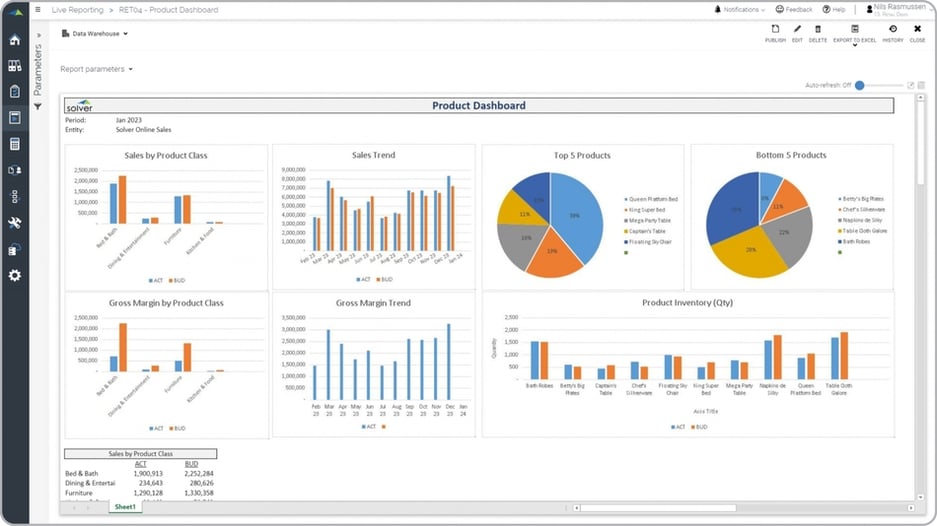Related Posts
- Subscription Billing Auto Forecast for SaaS Companies using Dynamics 365 Business Central
- Top 50 Opportunities Report for SaaS Companies using Dynamics 365 BC
- Subscription Sales by Contract Length Report for SaaS Companies using Dynamics 365 Business Central
- Multi-Year Profit & Loss Forecast Model for SaaS Companies using Dynamics 365 Business Central
- Lead Target Model for SaaS Companies using Dynamics 365 Business Central
Product Dashboard for a Retail Company
Purpose of Product Dashboards Retail businesses use Product Dashboards to provide managers with an easy, self-service solution to monitor product performance. When used as part of good business practices in retail operations, a company can improve its inventory, marketing and sales decisions as well as reduce the chances that to product performance goes under the radar for managers.
Product Dashboard Example Here is an example of a Product Dashboard with budget variances and trend analysis.

Who Uses This Type of Dashboard? The typical users of this type of dashboard are: Product managers, store and regional managers. Other Dashboards Often Used in Conjunction with Product Dashboards Progressive retail operations departments sometimes use several different Product Dashboards, along with general sales forecasts and budgets, sales dashboards, inventory reports, profit & loss reports and other management and control tools.
Where Does the Data for Analysis Originate From? The Actual (historical transactions) data typically comes from management systems or enterprise resource planning (ERP) systems like: Microsoft Dynamics 365 (D365) Finance, Microsoft Dynamics 365 Business Central (D365 BC), Microsoft Dynamics AX, Microsoft Dynamics NAV, Microsoft Dynamics GP, Microsoft Dynamics SL, Sage Intacct, Sage 100, Sage 300, Sage 500, Sage X3, SAP Business One, SAP ByDesign, Acumatica, Netsuite and others. In analyses where budgets or forecasts are used, the planning data most often originates from in-house Excel spreadsheet models or from professional corporate performance management (CPM/EPM) solutions.
What Tools are Typically used for Reporting, Planning and Dashboards? Examples of business software used with the data and ERPs mentioned above are:
- Native ERP report writers and query tools
- Spreadsheets (for example Microsoft Excel)
- Corporate Performance Management (CPM) tools (for example Solver)
- Dashboards (for example Microsoft Power BI and Tableau)
To learn more, visit the Resource Library.
TAGS: Reporting, Planning, Forecasting, Budgeting, FP&A, KPIs, ERP, Dashboards, Industry, Financial Reporting, Template Library
Solver, Inc.
Phone: +1 (310) 691-5300
